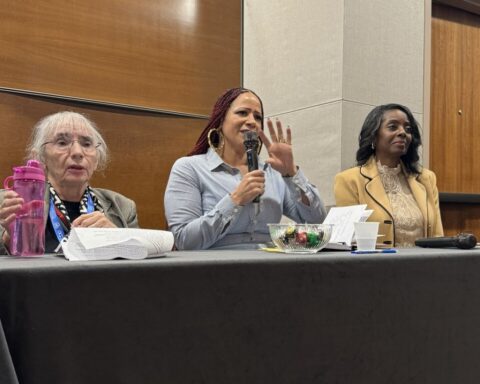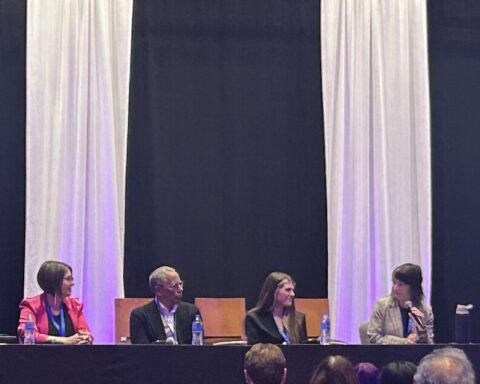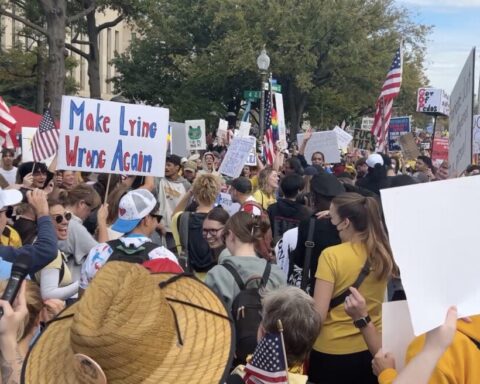By Kristin EdwardsHoward University News Service
As the 2024 Presidential Election is upon us, many Americans have turned to mail-in ballots, a vital option for those facing health challenges that complicate in-person voting.
During the Civil War, absentee ballots and the option to vote by mail were introduced to Americans, allowing eligible men to vote while away at war.
In the following years, mail-in voting provided an option for citizens unable to reach the polls on Election Day.
As mail-in voting has expanded, it has become a vital option for many.
According to the American Liberties Civil Union, voting by mail offers a secure option for elderly and immunocompromised Americans to participate in elections, reducing concerns about potential health risks associated with in-person voting.
Massachusetts native Josiah King said voting by mail in recent elections has proven to be the safest option for elderly family members.
“My grandma can’t stand in those long lines and be exposed to so many people, but that doesn’t mean she shouldn’t get to vote,” he said.
King emphasized that voting by mail is ideal because it makes sure everyone’s voice gets heard, even those who can’t get to the polls. “My grandparents and older relatives can still exercise their right to vote without jeopardizing their health or risking harm to their immune systems,” he said.
During the 2020 election, mail-in voting surged amid the pandemic, with 70% of residents using nontraditional methods to participate, according to the U.S. Census Bureau. Roughly 50% voted strictly by mail in 2020.
This trend is expected to remain strong in the 2024 election, as states like North Carolina, Michigan and Nevada have implemented changes since 2020, making voting laws more accessible for mail-in voters. The shift allows for greater accessibility and participation, officials said.
The Centers for Medicare and Medicaid Services (CMS) issued guidance for 2024, which requires nursing homes to make sure residents can exercise their right to vote free from interference, coercion, discrimination or retaliation from facility staff. Nursing home residents with immunocompromised conditions that prevent them from voting in person can receive assistance from their facilities to exercise their voting rights.
These facilities assist residents with getting absentee ballots, completing ballots with the support of an agent of their choice and ensuring timely mail delivery for receiving and sending ballots. This support helps ensure that residents facing health challenges can actively participate in the electoral process.
Emergency Absentee Ballot
Hospitalized patients often use mail-in voting to ensure they can participate in elections. Patient Voting, a nonpartisan organization, provides assistance to eligible voters who find themselves unexpectedly hospitalized,by helping them register and cast their votes.
Patients who are suddenly hospitalized and unable to vote in person may qualify for an Emergency Absentee Ballot, which is intended for those who could not request an absentee ballot in advance.
The District of Columbia board of elections is prepared to assist immunocompromised voters on election day who have come out to the polls to cast their vote.
Officials said, “It is important to plan accordingly [voting while facing health challenges], but we are now doing emergency cases only to assist voters. We will be providing curbside assistance for those who can’t walk.”
Keith Haller is among those who will be making it to the polls, despite health challenges.
“Since I didn’t vote by mail, I will be wearing a mask and gloves, and have assistance getting to the polls today,” Haller said. “It would have been easier if I’d voted by mail.”
Accommodations like voting by mail and having assistance at the polls for those who need it is crucial.
The Center for American Progress notes that mail-in voting allows voters with disabilities the flexibility to complete their ballots comfortably at home, with ample time before Election Day.
The Center highlights that mail-in voting enables Americans with physical disabilities to avoid the challenges of transportation and inaccessible polling locations. It offers a safer way for those with compromised immune systems to participate without risking illness.
More than 28% of American voters are expected to use mail-in voting, reflecting the increasing popularity of this option among voters.
Voters who opt to vote by mail due to health concerns are able to receive their ballot from their state or territory. Mail-in voting policies vary across states, with key differences in who qualifies, deadlines and ballot processing guidelines.
Kristin Edwards is a HU News Service reporter.











